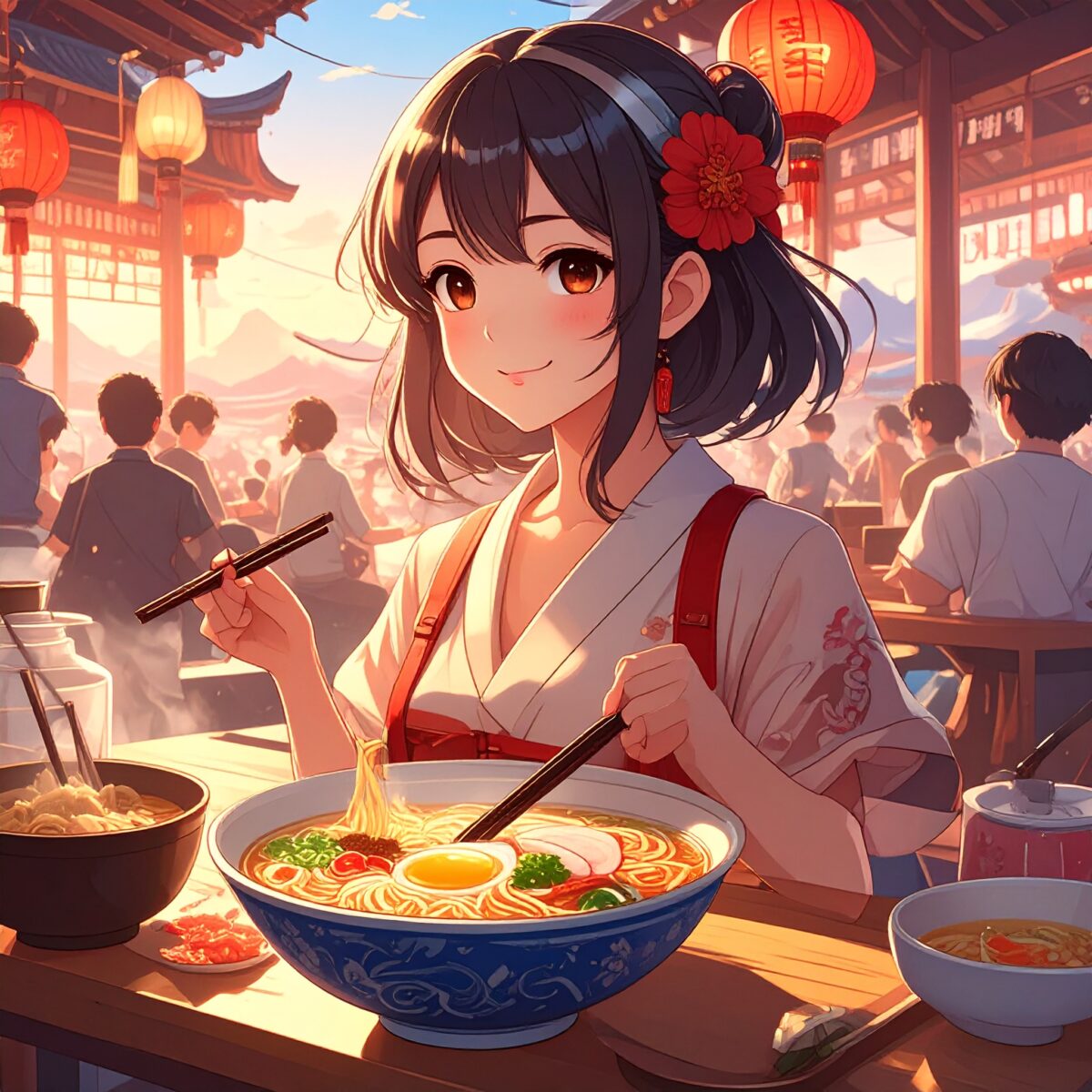One of the greatest joys of travel is discovering the unique flavors of each destination. And in Japan, it’s surprising to realize that even something as familiar as ramen can take on entirely different identities depending on where you are. From Kanto to Kansai, Hokkaido to Kyushu, ramen isn’t just food—it’s a reflection of local culture, as distinctive as the dialects or scenery of each region.
When I first tried miso ramen in Sapporo, I was struck by the richness and aroma of the broth. In the cold northern climate of Hokkaido, the locals favor bold, warming flavors that reach deep into your core. The roasted fragrance of stir-fried vegetables, thick wavy noodles, and the glistening layer of oil on top all came together in a bowl designed to fight off winter chill. It wasn’t just ramen—it was a recipe for survival and comfort.
In contrast, a visit to Fukuoka introduces a completely different experience: Hakata-style tonkotsu ramen. The creamy white pork bone broth is both rich and surprisingly clean on the finish. The ultra-thin, straight noodles are cooked to your preference, and the unique “kaedama” system—offering extra noodles to continue your meal—adds a dynamic, interactive layer to the experience. It’s a style that invites you to savor and extend the pleasure, one bowl at a time.
In Tokyo, shoyu (soy sauce) ramen still reigns supreme. Here, chicken- or dried fish-based broths deliver a deep yet delicate flavor. Often known as chuka soba (Chinese-style noodles), Tokyo’s ramen is both comforting and refined, with a balance that never overwhelms. From long-established classics to modern creative takes, the diversity within this one city alone is impressive.

Even in smaller regional cities like Kitakata, Tokushima, and Wakayama, ramen takes on unique forms that reflect local traditions and tastes. Kitakata ramen, for example, is known for its light soy-based broth and delightfully chewy thick noodles—so gentle and comforting, there’s even a local custom of enjoying it in the morning, called asa-ra (morning ramen). In Wakayama, the regional specialty is a hearty tonkotsu-shoyu (pork and soy sauce) ramen, typically enjoyed with a bowl of rice on the side. Meanwhile, in Tokushima, ramen often features a rich, sweet-savory broth with a raw egg cracked on top—a combination that feels more like a full meal than a simple noodle dish.
Each of these regional styles reveals just how diverse and expansive the world of “ramen” truly is. From the choice of toppings, broth base, and noodle shape to the way it’s served, ramen in Japan often feels like an entirely different dish from town to town. And within each variation lies a story—of local preferences, climate, ingredients, and culinary history—making ramen not just a dish, but a form of cultural expression.
For travelers, ramen can be a delicious entry point into local life. Whether it’s a line-out-the-door shop beloved by locals, a charming family-run restaurant on a shopping street, or a quick-standing-only eatery near the station, there’s always a bowl waiting that represents the soul of the place. And because ramen is generally affordable, it’s easy to try multiple styles without breaking the budget.
In recent years, many visitors to Japan have begun making “ramen pilgrimages,” traveling specifically to sample the country’s famed local bowls. From stamp rallies at popular shops to regional ramen festivals, there’s a growing number of events that combine tourism and ramen culture into unforgettable travel experiences.
No matter the region, one truth remains: each bowl of ramen is more than just a meal—it’s a way to experience the character, flavor, and spirit of a place. As you rest your feet and savor the steam rising from your bowl, you’re also taking in a taste of the land itself. This is why Japan is rightly called a “ramen paradise.”
So on your next journey, instead of opening a guidebook, try stepping beneath the noren curtain of a ramen shop. What awaits may not just be a new flavor—but a new perspective on Japan itself. Ramen, in every bowl, leaves behind a memory. It’s the most delicious way to travel.




